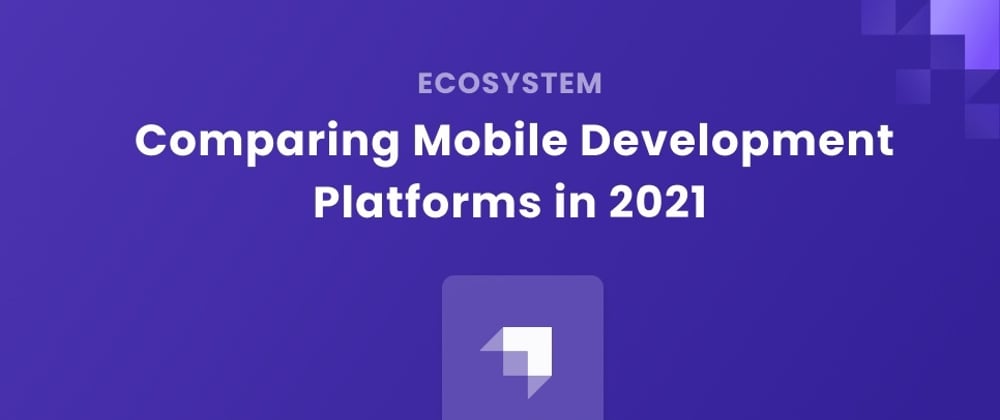Building a mobile app is a complex task in 2021. As a developer, you need to find creative ways to combine all the following capabilities in a single project:
High performance: A must if you want to keep your users connected and increase your app client's base.
Cost-effectiveness: Developing an app takes time, and time is expensive. A well-done project will always have in mind the cost of production and the potential market's reach.
Scalability: The mobile app world is constantly evolving; new updates are being created to operating systems every day. Can your app keep up with them?
New frameworks have been created to answer all these considerations, however, this process has caused fragmentation in the market for mobile applications. It's not always easy for a developer to find the best solution for a problem.
If you want to create a cross-platform app in 2021, this guide is a good place to start. We'll discuss the most famous cross-platform frameworks:
Flutter
Ionic
React Native
This should help you understand which one is the right choice for your project. Plus, I'll quickly describe how you can easily integrate each of them with Strapi, an open-source headless CMS for building your apps.
Flutter
Flutter is a free and open-source mobile UI framework created by Google. It allows you to develop native mobile applications using a single code base. The framework itself is composed of two different main parts:
Flutter's SDK: A collection of helper tools for your development like a development server and live-updating of your app on either an emulator or an actual device.
Flutter's framework: A series of UI components (called widgets) you can use to build your UI or further customize based on your needs.
The whole idea behind these two main parts of Flutter is to use them in conjunction with a dedicated language created by Google called Dart. So you will use Dart plus Flutter's framework and SDK to build amazing mobile apps.
Benefits of Flutter
Simplicity: Using Flutter is significantly easier than learning all the languages you need to develop an app both on Android and iOS. You'll have a product you can launch on both platforms from a single code base at the end of your development phase.
Great SDK tools: Developing your app with Flutter means you'll have many tools at your disposal, like the built-in hot reload feature that allows you to see changes in your app instantly without having to recompile it.
It's not only a mobile solution: In May 2019, Google announced new support from Flutter for desktop, embedded, mobile, and web apps from the same codebase.
Disadvantages of Flutter
It's constantly changing: This makes it harder to keep up with all the updates the framework goes through.
You have to learn Dart: While learning Dart is still a better choice than learning both Swift and Kotlin, this language is still very new. So it might be hard to find people who are skilled enough to build an app with it for your team.
Flutter apps are large: Due to their built-in widgets, Flutter apps are larger than their native counterparts. Since users have limited memory on their devices, you should always take this into account.
Want to integrate Flutter with Strapi? Check out the docs on how to do that here.
Ionic
Ionic is an open-source UI toolkit for building performant cross-platform mobile apps. It uses a different approach from other popular mobile development tools---it lets you still create a native app, but you do this by creating a web app with HTML, CSS, and JavaScript.
After your web app is ready, it will be wrapped by the Cordova framework, which will then render your app in a native WebView. So you can think of this process as a kind of hidden mobile browser running your app.
Benefits of Ionic
Support for different technologies: Starting from Ionic 4, you can use any frontend framework you want to create your mobile apps.
Great also for beginners: If you know HTML, CSS, and JavaScript, you can start building your mobile apps thanks to this fantastic tool.
Disadvantages of Ionic
Not suitable for large apps: Unfortunately, using WebView for large applications can result in a significant lack in performance that you should keep in mind.
May lack native plugins support: Some native plugins aren't stable and can conflict with each other. Or they might be completely absent, forcing you to implement your solution from scratch.
Want to integrate Ionic with Strapi? Check out the docs on how to do that here.
React Native
React Native is a cross-platform framework for building unique mobile applications using React components. The final result of using this tool is an entirely native mobile app. Plus you'll get performance similar to the ones you'd get by writing platform-specific code.
Note, however, that you won't use classic HTML tags like you were used to in its browser correspondence when using React Native. Instead, you'll use the library's custom components, which will then be compiled to a native version.
Benefits of React Native
Easy learning curve: If you already know JavaScript or are a React developer, using this framework will be straightforward. You won't have to learn anything new apart from dealing with the custom components this tool offers.
Great for your productivity: React Native comes with unique features like hot-reloading and Chrome developer tools for debugging your app.
Performance: The performance of apps built using React Native are incredibly close to those you would get from platform-specific code. Yet you're still writing a single codebase.
A great community: More than 1500 contributors support this tool, and huge tech companies are using it like Airbnb, Uber, and Tesla.
Disadvantages of React Native
Still a beta product: Despite being used by top tech players, React Native is still in beta, so it's not uncommon for developers to find bugs and problems when using it.
Few third-party components: Due to this project being still new, there are not as many third-party components as you might expect. So sometimes, you might be forced to implement a custom solution by yourself from scratch.
Want to integrate React Native with Strapi? Check out the docs on how to do that here.
Use Cases
After comparing the different advantages and pain points of Flutter, Ionic, and React Native, you can easily make some assumptions about which one you should choose for which situations:
Use Flutter for your MVP (Minimum Viable Product): If you want to test a possible app idea, Flutter is definitely the way to go. First, it provides hundreds of built-in widgets to make your apps look beautiful on all platforms. Second, it helps you create your product extremely fast thanks to its great SDK full of top features like hot-reloading.
Use Ionic or React Native to start competing: If you want to start working in the mobile world, these two technologies are a fantastic choice. With Ionic, you can use any modern frontend framework from the start; Cordova will then wrap your app and turn it into a native product. If you or your team are really into React, then you go for the React Nnative route. This will allow you to ship extremely performant mobile and web apps in no time with your pre-existing JavaScript skills.
Conclusion
Building a cross-platform mobile app is a hard job in 2021, but choosing how to do it doesn't have to be. You know the most relevant frameworks for building your next app, and you can recognize the best choice for each scenario.
Don't forget about the backend side of your applications. If you want to ship your product to many different platforms, a headless CMS like Strapi is the perfect choice for that, with easy integrations for Flutter, Ionic, and React Native.







Top comments (1)
Helpful article! Thanks! If you are interested in this, you can also look at my article about Flutter templates. I made it easier for you and compared the free and paid Flutter templates. I'm sure you'll find something useful there, too. - dev.to/pablonax/free-vs-paid-flutt...